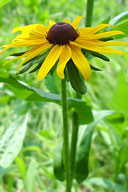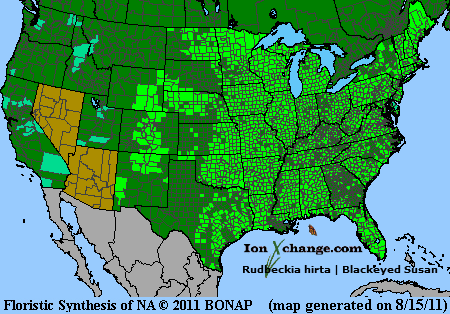 Loading... Please wait...
Loading... Please wait...- Home
- SEEDS
- SEED MIXES
- BUY PLANTS
- Info Request
-
Educational Videos
- Greenhouse Transplanting Demonstration
- Native Seed Cleaning demonstration at Ion Exchange Native Seed and Plant Nursery
- Attracting Butterflies
- Bidens - Bidens cernua Harvest Video
- Big Blue Stem Harvest
- Butterfly Milkweed Video
- Button Blazingstar - Liatris aspera Video
- Buttonbush - Cephalanthus occidentalis Video
- Canada Anemone - Anemone canadensis Harvest Video
- Cardinal Flower - Lobelia cardinalis Video
- Control Burn - Wildflower Field
- Cream Gentian - Gentiana flavida
- Culver's Root - Veronicastrum virginicum Video
- Cup Plant - Silphium perfoliatum Video
- Dormant Seeding | Planting
- Earthyman's Favorite Wildflowers Video
- Eco-Friendly Golf Course Seed Mix
- Floating Islands
- Fringed Loosestrife - Lysimachia ciliata Video
- Giant Yellow Hyssop - Agastache nepetoides Video
- Indiangrass - Sorghastrum nutans Video
- Iowa Prairie Partner Program
- Leadplant - Amorpha canescens (Potted) Video
- Meadow Blazingstar - Liatris ligulistylis
- Midland Shooting Stars - Dodecatheon meadii Video
- Native Plant Nursery Field Irrigation Experiment
- Nodding Onion - Allium cernuum Video
- Ohio spiderwort - Tradescantia ohiensis Video
- Old Man's Beard - Clematis virginiana blooms Video
- Oxeye Sunflower - Heliopsis helianthoides Video
- Prairie Spiderwort - Tradescantia bracteata
- Purple Coneflower - Echinacea purpurea Video
- Rain Garden or Water Garden Video
- Rattlesnake Master - Eryngium yuccifolium Video
- Riverbank Stabilization - Wetland Plants
- Rose Mallow - Hibiscus militaris Video
- Rosinweed - Silphium integrifolium Video
- Royal Catchfly - Silene regia
- Showy Tick Trefoil - Desmodium canadense Video
- Sneezeweed - Helenium autumnale Video
- Swamp Betony - Pedicularis lanceolata Video
- Swamp Milkweed - Asclepias incarnata Video
- Sweet Blackeyed Susan - Rudbeckia subtomentosa Video
- Tall Coreopsis - Coreopsis tripteris Video
- Urban Butterfly Garden
- Wild Bergamot - Monarda fistulosa Video
- Wild Geranium - Geranium maculatum Harvest
- Wild Goldenglow - Rudbeckia lanciniata Video
- Wild Petunia - Ruellia humilis Harvest Video
- Woodland Knotweed - Polygonum virginianum Video
- Yellow Coneflower - Ratibida pinnata Video
- Blog
- Resources
- Policies
Contact Us
Phone:
563-419-0837
or 563-535-7231
Email:
hbright@ionXchange.com
Browse Products
Add to Wish List
You Recently Viewed...
Our Newsletter
Product Description
Black-eyed Susan, Brown Betty, Brown Daisy, Brown-eyed Susan, Coneflower, Donkeybead, English Bull's-eye, Poor Land Daisy, Yellow Daisy, Yellow Jerusalem, Yellow Ox-eye Daisy, Deer Eye"
| Sun Exposure | Prairie, Savanna |
| Soil Moisture | Wet Mesic, Mesic, Dry Mesic, Dry |
| Bloom Time |
Summer, Fall July, August, September, October |
| Bloom Color | Yellow |
| Max Height | 2 feet |
| Wetland Code | FACU |
| Germ Code | C(30) |
| Seeds Per Ounce | 92,000 |
R. hirta is found throughout the Tallgrass region and is prevalent under a variety of conditions. It generally prefers drier areas. A perennial growing to 3 feet tall, it has bright orange-yellow flowers that bloom from June to September. The stem is hairy and without branches below the flower heads.
Rudbeckia named after Olof Rudbeck the elder (1630 - 1702) and the younger (1660 - 1740). Hirta is from the Latin word for "hairy".
Black-eyed Susan was used extensively by early settlers as a stimulant and a diuretic. They brewed a tea from the dried leaves and felt it acted as a stimulant for the kidneys. The Potawatomi made a tea from the root to relieve suffering from colds.
Edible Uses: Unknown
Medicinal Uses: An infusion of the roots has been used in the treatment of colds, dropsy and worms in children. A warm infusion of the root has been used as a wash on sores and snake bites. The ooze from the roots has been used as drops to treat earaches.
Other Uses: A yellow dye is obtained from the flowers.
Herbal Uses: Unknown











